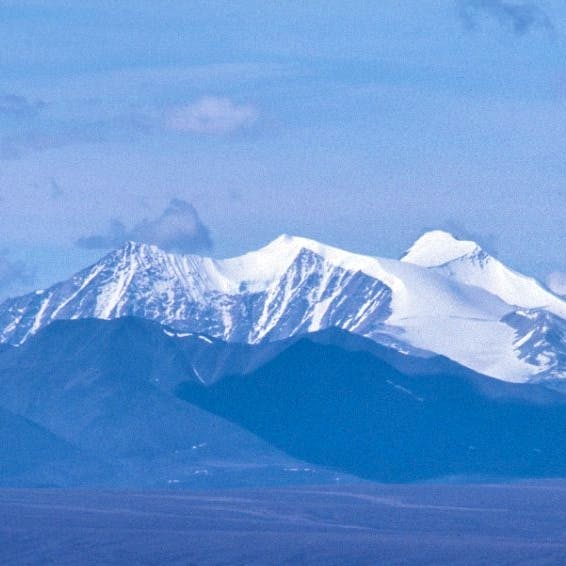BOSTON— A deadline for expanding critical habitat protections for the North Atlantic right whale — one of the world’s most endangered whales — has been set in response to a legal settlement agreement. Each year most of the 500 North Atlantic right whales remaining on Earth migrate from their feeding and breeding grounds off the U.S. Northeast to their nursery areas off the Southeast. But only a tiny portion of this expansive range is protected as federally designated “critical habitat” under the Endangered Species Act, making the whales more vulnerable to threats that include commercial fishing gear, ship strikes and oil drilling.
The settlement requires the federal government to make a final decision by February 2016 about where and how much additional habitat should be protected.
“If these whales are going to survive in the long run, we need to protect the most important waters where they live, eat and raise their young,” said Sarah Uhlemann, a senior attorney with the Center for Biological Diversity. “Every year these endangered whales have to navigate a virtual obstacle course of threats on their migration along the coast — an ocean dense with fishing nets and lines, crisscrossed by speeding vessels and increasingly roaring with underwater noise.”
In 2009 a coalition of environmental and animal protection groups formally petitioned the National Marine Fisheries Service to significantly expand habitat protections to include all of the whales’ nursery and breeding and feeding grounds. The petition pushed to expand the whales’ protected area more than tenfold, from roughly 4,000 square miles to more than 50,000 square miles.
Although the Fisheries Service has repeatedly acknowledged that expansion of critical habitat area is needed to protect right whales, it failed to move forward. Last spring, the groups filed suit in federal court in Boston to force action. The settlement agreement, filed on Friday, sets a legally binding deadline for the Service to issue a final decision.
Ralph Henry, senior attorney for The Humane Society of the United States, said: “The National Marine Fisheries Service’s protracted failure to take action leaves whales vulnerable to injury and death in their most essential habitat areas. Protecting the right whale’s vital habitat is the most common sense step toward moving this species out of the emergency room and onto the path to recovery.”
The groups’ petition seeks expanded protection for the whale’s calving grounds off Georgia and northern Florida, critical feeding habitat off the Northeast coast and the mid-Atlantic migratory route between calving and feeding grounds. In areas designated as critical habitat, the federal government must ensure that activities including commercial fishing, vessel traffic and oil drilling will not diminish the value of the habitat or reduce the whale’s chance for recovery. This is especially important because most whales run the gauntlet of ocean dangers twice each year, migrating south to north and back again.
"The North Atlantic right whale is truly a species in crisis. Its population is perilously small and the whales face numerous threats, yet for years the Fisheries Service has refused to act," said Jane Davenport, senior staff attorney at Defenders of Wildlife. "Expanding protected areas is critical to the North Atlantic right whale's survival and recovery and this decision can't come soon enough."
The primary threats to imperiled right whales are ship strikes and entanglement in commercial fishing gear. In response to conservation groups’ prior actions, the agency recognized these threats by issuing a rule requiring reduced ship speeds and a rule requiring fisheries to reduce the amount of gear in the water. But the whales are also seriously threatened by habitat degradation, rising noise levels (which distress whales and can interfere with their communication), climate change, ocean acidification and pollution. Today’s agreement will help further address these threats.
Regina Asmutis-Silvia, executive director for the Whale and Dolphin Conservation, said: “Right whales have the potential to recover. The choices we make now are the deciding factor as to whether our grandchildren will have the opportunity to see live North Atlantic right whales off our coasts, or only be able to read about them in history books.”
The Humane Society of the United States is the nation’s largest animal protection organization, rated the most effective by its peers. Since 1954, The HSUS has been fighting for the protection of all animals through advocacy, education and hands-on programs. We rescue and care for tens of thousands of animals each year, but our primary mission is to prevent cruelty before it occurs. We're there for all animals, across America and around the world. Celebrating animals and confronting cruelty — on the Web at humanesociety.org.
The Center for Biological Diversity is a national, nonprofit conservation organization with more than 800,000 members and online activists dedicated to the protection of endangered species and wild places. Online at: biologicaldiversity.org.
Defenders of Wildlife is dedicated to the protection of all native animals and plants in their natural communities. With more than one million members and activists, Defenders of Wildlife is a leading advocate for innovative solutions to safeguard our wildlife heritage for generations to come. For more information, visit defenders.org.
Whale and Dolphin Conservation is the leading global charity dedicated to the conservation and protection of whales and dolphins. We defend these remarkable creatures against the many threats they face through campaigns, advising governments, conservation projects, field research and rescue — on the Web at whales.org.
For over 75 years, Defenders of Wildlife has remained dedicated to protecting all native animals and plants in their natural communities. With a nationwide network of nearly 2.1 million members and activists, Defenders of Wildlife is a leading advocate for innovative solutions to safeguard our wildlife for generations to come. To learn more, please visit https://defenders.org/newsroom or follow us on X @Defenders.
News

Defenders Slams Trump Interior Pick Burgum

